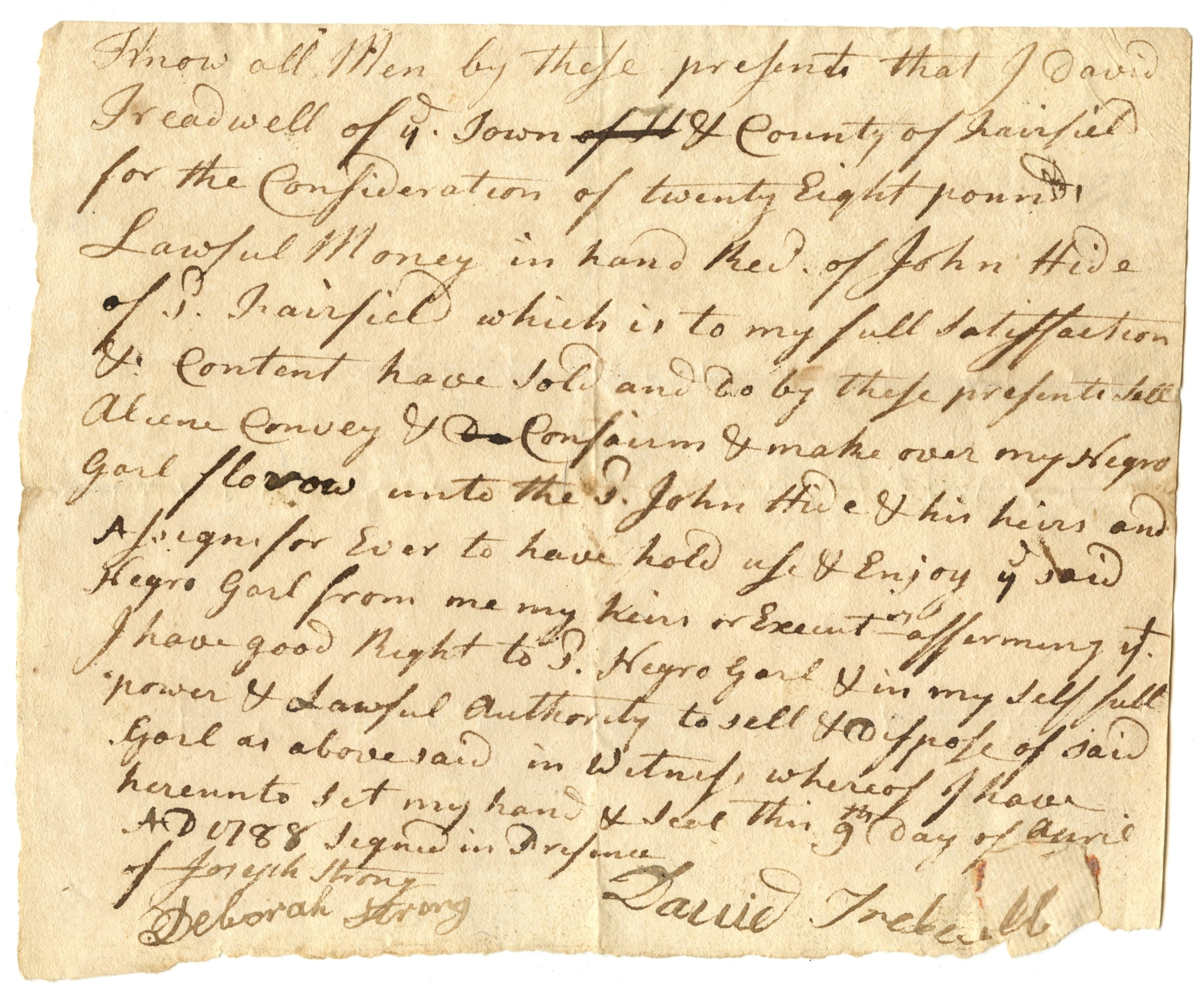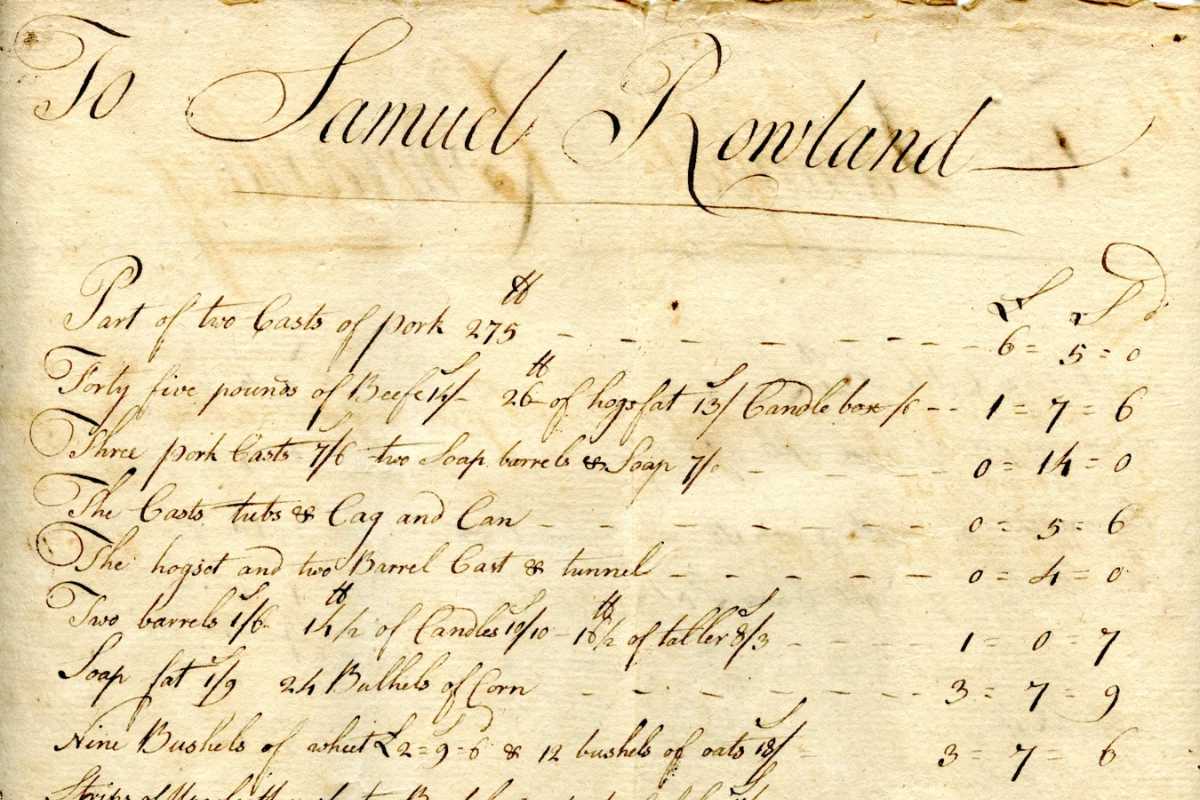Enslaved people lived in the areas of Fairfield and Norwalk that would eventually become Westport. Over 240 men, women, and children were bound in the parish of Greens Farms alone in the eighty-year period from 1742 to 1822.
They were from the households of prominent families like the Jennings, Jesups, Nash’s, Sherwoods, and Coleys. Their labor – from farming to shipping to retail – produced wealth for those who enslaved them and prosperity in the community at large.
The stories of enslaved African Americans of the 18th and early 19th centuries are often only told in terms of the legal documentation relating to their existence as the “real property” of their captors. The purchase and sale of captive African Americans were recorded as “deeds” to real property. Manumission (emancipation) papers were similarly recorded with Land Records.
Enslaved people were also “handed down” to heirs in wills and appear as bond in legal proceedings, and even as mortgages to secure loans. These legal documents were archived in local town clerk offices, where they remain today. Church records also provide insight to the lives of those bound into slavery. Before the incorporation of the town of Westport, Green’s Farms Church records list the birth, death, baptism, and marriage of over 200 people enslaved here from 1741 to 1822.













